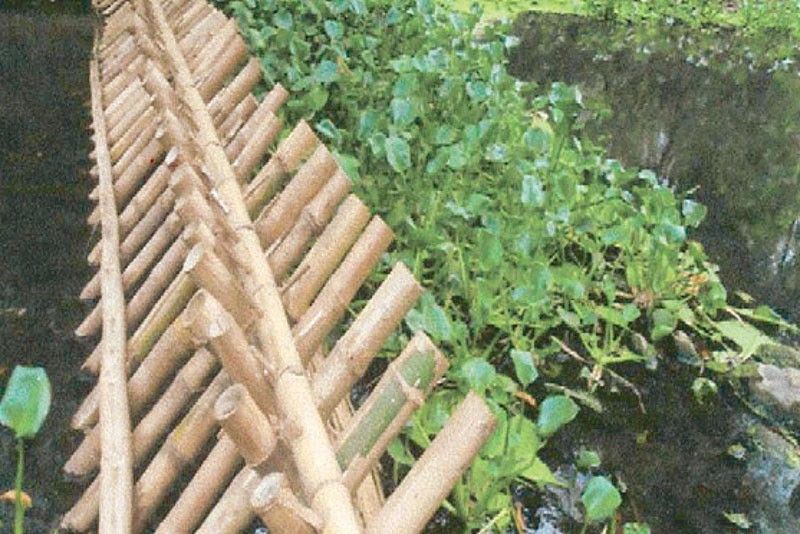StarScience: Saving Laguna de Bay 2

(Conclusion)
MANILA, Philippines – East Bay had the best rated water quality with a score of 81 percent. All water quality indicators were rated A except chlorophyll a which was rated zero percent. But the apparently good water quality did not reflect in the fisheries which scored lowest at 28 percent, and the CPUE a mere three percent. The fishing ground allocation here is small at one fisher per 28 hectares. Fisheries suffer most from predation pressure coming from the clown fish.
Obviously, the clown fish is benefitted by the good water quality. This fish gains a kilo out of consuming seven kilos of fish.
South Bay
Water quality here was found to be second best at 77 percent, a passing mark. All water quality indicators were at acceptable levels except phosphate (63 percent), and chlorophyll a (zero percent). The fisheries score was second lowest at 43 percent owing to a low score for native fish species composition (37 percent). This bay is the present site of the lake’s fish sanctuary.
A host of factors influences fish life, but many of these were not included in the assessment to come up with the EHRC. Knowledge is still wanting as to how strongly each of these might have contributed to a poor performance of the lake’s fisheries.
The ratios of zooplankton had changed, indicating that some organisms are being unduly favored over others. The bias in prey-predator relationship at the microconsumers level may now be mirrored at the macroconsumers level. For instance, how come the knife fish seems unaffected by the extant pollution, while tilapia and bangus are dwindling in number and diminishing in size?
The BFAR has chosen ayungin (Leipotherapon plumbeus) as indicator fish to signal the return of favorable water of Laguna de Bay. In 2013, the highest total catch of this species was in Central Bay, while the lowest was in East Bay.
Recommendations
The EHRC asserts “people can make a difference.” Government agencies and local communities must work together. An interagency technical working group has been formed to harmonize efforts for the implementation of projects and strategies for the containment and prevention of the spread of clown knife fish (Notopterus chitala), which now causes biological pollution in the lake. There must be a sustained mobilization of communities to participate in the massive retrieval of the knife fish. More efforts must be made of providing livelihood opportunities through development of value adding technology for the economic utilization of the knife fish. There should be a more energized operation of the BFAR interactive invasive fishes webpage for information dissemination and participatory citizen science.
This writer supports President Duterte’s move to dismantle the illegally installed fishpens and cages in the lake which continue to limit the breathing space of the fish which obviously need a wide space for growth, mobility and foraging.
The illegally installed fishpens should be dismantled gradually and systematically to ensure that the fish supply will not be abruptly brought to a critically low level. And the action of dismantling should tend towards the production of high quality fish. The entire effort of lake rehabilitation should be holistic for the sake of people and the environment.
The EHRC points to a new technology that helps restore water quality, namely the UPLB Aquatic Macrophyte Biosorption System (AMBS). A simple low-cost phytoremediation system developed at UPLB, the AMBS uses bamboo and native aquatic plants (water hyacinth or kangkong), and is applicable in shallow streams and rivers. It can serve as an intervention that makes for a holistic approach to habitat restoration not only of the streams in which it is installed, but also, and ultimately, the Laguna de Bay, the final destination of the lake’s tributary streams. Over the last seven years that the AMBS has been operational in the Molawin Biopark, Tanay River and Pangao River of Lipa City, native fishes in tremendous numbers have come back – evidence of habitat restoration. As the technology cited in the EHRC that can help restore water quality, this low-cost phytoremediation technology may yet be the system to give hope for a much needed attitudinal change among riverside and lakeside communities owing to the return of aquatic life as a visible evidence of a successful habitat restoration.
About the author:
A professor emeritus at the Institute of Biological Sciences, College of Arts and Sciences, UPLB, Macrina Tamayo-Zafaralla conceptualized the Biopark Strategy and the AMBS.
- Latest





























